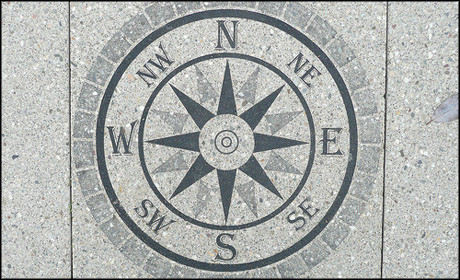
The Frontline Club has long been a haven for conflict reporters and journalists from around the world, but this week it played host to a debate on the future of newsgathering.
Chaired by Richard Pendry, an experienced conflict reporter now a lecturer in broadcast journalism at the University of Kent, the discussion focused on the effects of mobile, geolocation and user-generated content (UGC) on the future of news.
Trushar Barot, assistant editor of the BBC UGC and social media hub, believes a key trend for journalism and newsgathering in the near future could be the "ubiquity of mobile coverage" around the world.
Global mobile internet penetration is currently estimated to be around two billion, depending on the source, but that number is set to dramatically increase, he said.
"Within two or three years there may be five or six billion people that not only have ability to talk to each other [digitally]," Barot told a packed hall at the Frontline Club, "but broadcast themselves globally as well."
The panel agreed that events in Syria and the wider Arab Spring have led to a large increase in UGC from around the world as protesters and eye-witnesses record footage using mobile phones.
At the BBC, Barot said journalists would often have to go back to sources in those countries to gain extra, verifiable information about photos or videos that had been submitted.
"Quite soon after that we started seeing new information in the crowds," he said, "people holding placards with the date and location to help journalists around the world."
Although by itself this would not be enough to verify the image or footage fully, it would play a considerable factor, said Barot.
He added that the fact that "people have become better at commentating dates and times" in videos proves that they are "educating themselves about what journalists may need".
Eliot Higgins, better known as the Syrian conflict blogger Brown Moses, and Malachy Browne, news editor at social newswire Storyful which was recently bought by NewsCorp, spend much of their day verifying and sourcing UGC through social media.
Higgins explained how Google Maps played a large role in his verification techniques for UGC. Using examples from the Libyan civil war, he gave a simple example of looking for landmarks in the videos and being resolute about matching them to maps.
.@Brown_Moses details cross referencing vids with google maps through landmarks https://t.co/kGJjXzE1yi #frontlineclub
— Alastair Reid (@AlastairReid3) January 21, 2014
Higgins uses further, more complex techniques for some stories, he said, that involve measuring distances by scale or 3D modelling. Higgins will be launching a new website in the near future where he will be sharing more of his techniques in greater detail.
At Storyful, Browne explained that the team had developed its own technology for the sourcing and verification of UGC.
The technology has been developed over the last few years to "filter the social web", he said, that allows Storyful to pick up on stories and monitor social media very efficiently.
Storyful has built "intelligent systems," said Browne, "that allow us to monitor cities and states" using more than 600 individual lists of sources. The technology then monitors the "changing nature" of the lists, monitoring different languages and what stories may be trending across social networks.
Storyful is trending on our own discovery tech! #HeatMap pic.twitter.com/EWBnMOiLL6
— Malachy Browne (@malachybrowne) December 20, 2013
Browne, Higgins and Barot were all keen to stress the impact that geolocation may have on newsgathering and verification in the near future, especially as mobile footage plays a bigger role in how news is reported.
The BBC began using geolocation tags in tweets to track stories during the London riots of 2011, said Barot, and with the increased use of platforms like Geofeedia he expects an "exponential growth" in such technology.
Also speaking on the panel was "Greg" from the charity Videre. Attending under a pseudonym and keeping large parts of his work and identity a secret for "the protection of people on the ground", Greg explained how his organisation worked on undercover projects around the world, documenting human rights abuses.
"Videre creates a bridge between new types of citizen journalism and media by taking footage from one place or another and delivering it to the world," he said.
The charity embeds citizen journalists in situations – illegal mining, political activism – with secret cameras for months on end, collecting footage that is then given to news agencies for the story to be told.
Greg often carries a bag with nine phones, each with a separate identity and back story, that keep him in touch with embedded journalists around the world.
As such, the increase in geolocation for newsgathering could be potentially catastrophic to his work. Information is never transferred digitally, he said, and the utmost precautions are taken to protect the lives of his embedded colleagues.
The use of geolocation by nefarious forces to identify those who may be disseminating information that is against their wishes was a concern for the panel on the whole, and an issue which all considered seriously before publishing.
A possible solution, said Higgins, is InformaCam, a piece of software being developed by The Guardian Project that "creates additional data, encrypts it all and sends it to a secure server", he said.
Free daily newsletter
If you like our news and feature articles, you can sign up to receive our free daily (Mon-Fri) email newsletter (mobile friendly).
Related articles
- The summer 2024 journalism grants roundup
- 200 women speakers you need at your next journalism event to avoid all-male panels
- How Reuters, Newsquest and BBC experiment with generative AI
- Standing out in a crowded market: what makes a top news podcast?
- How can UK commercial local news media respond to BBC expansion?









